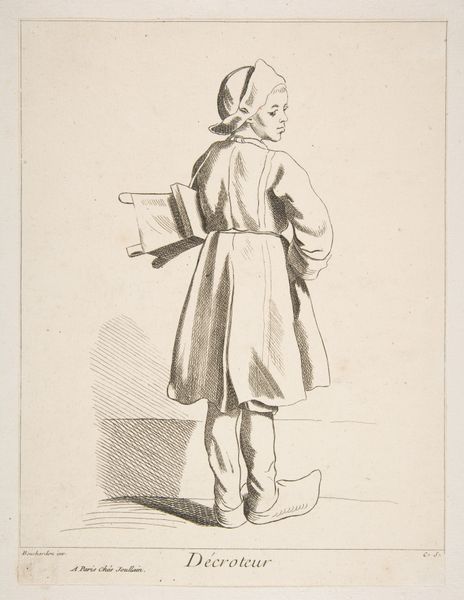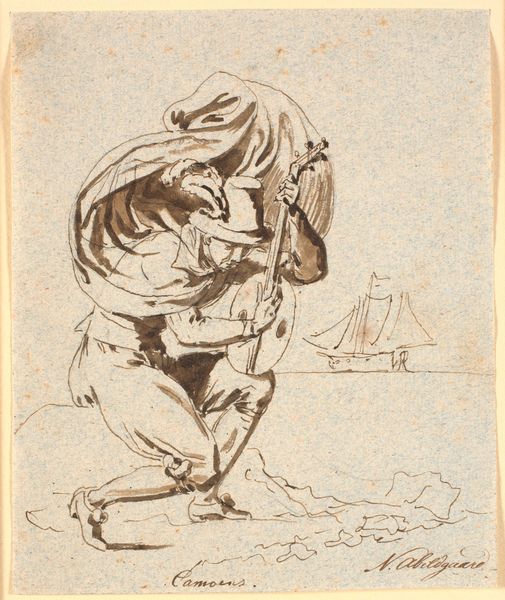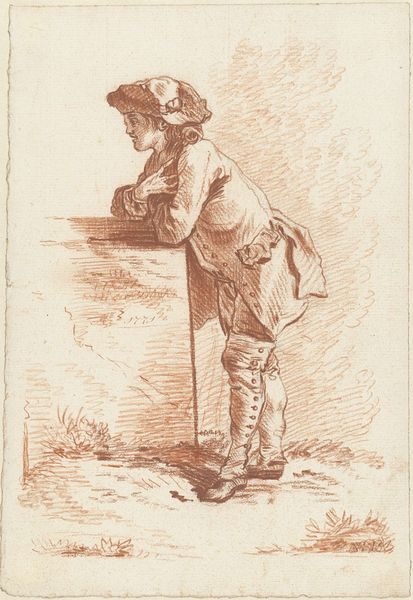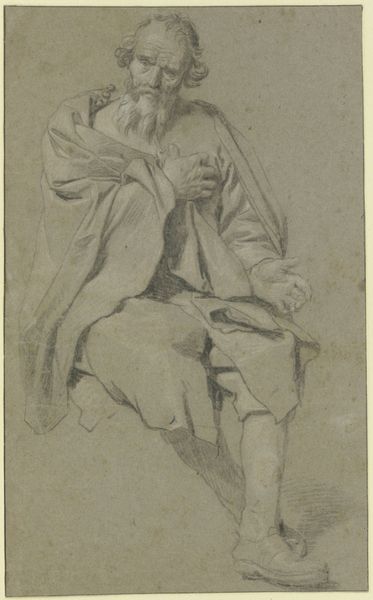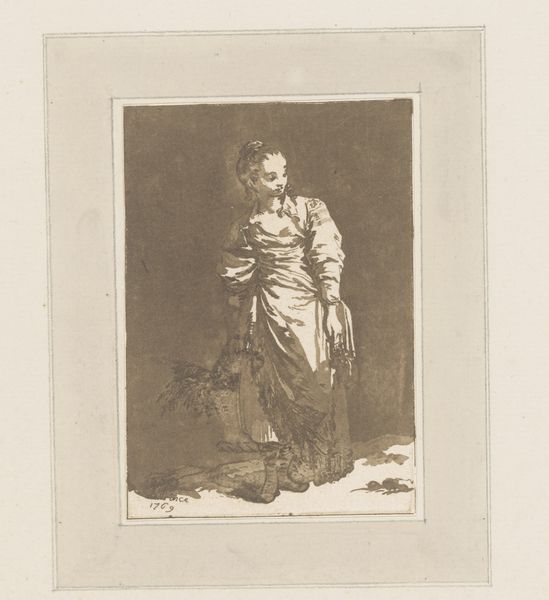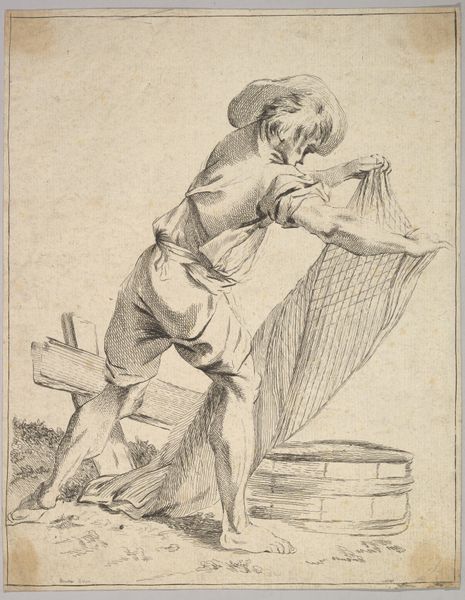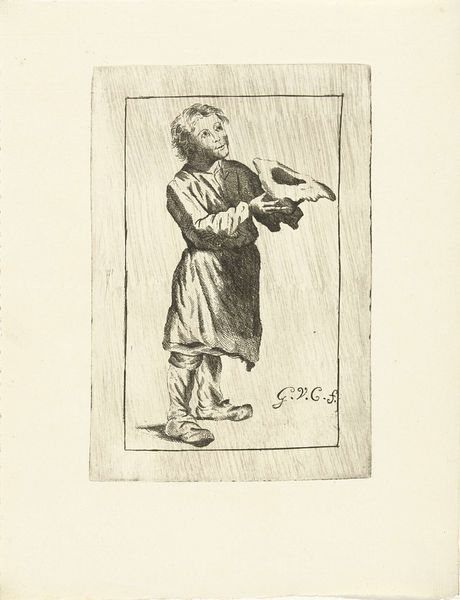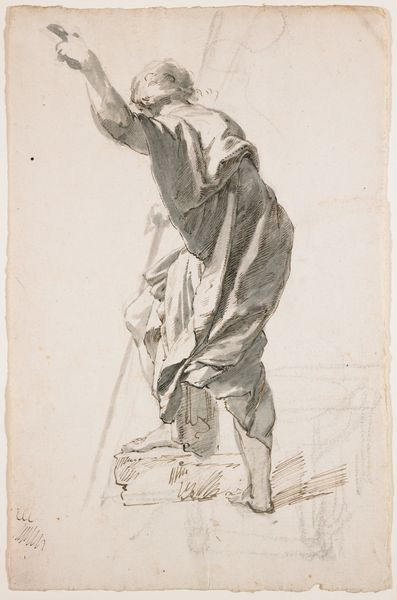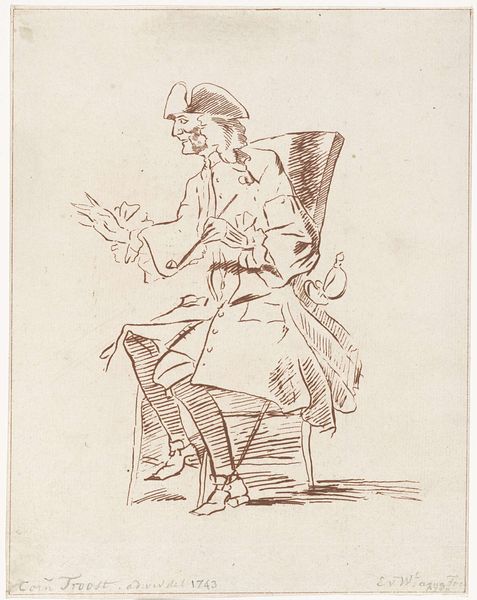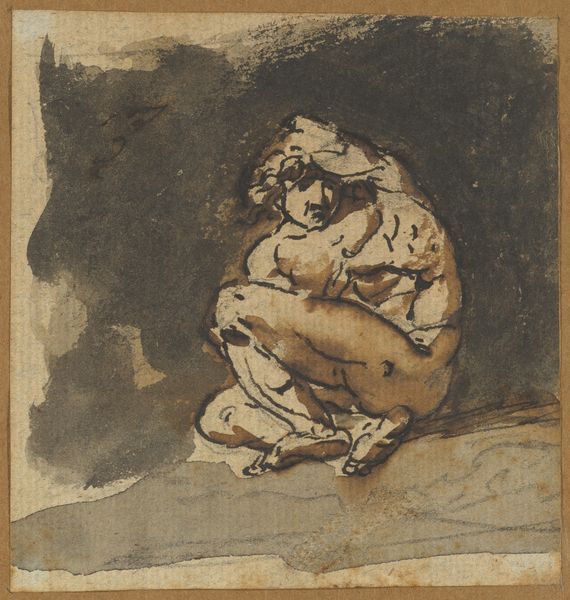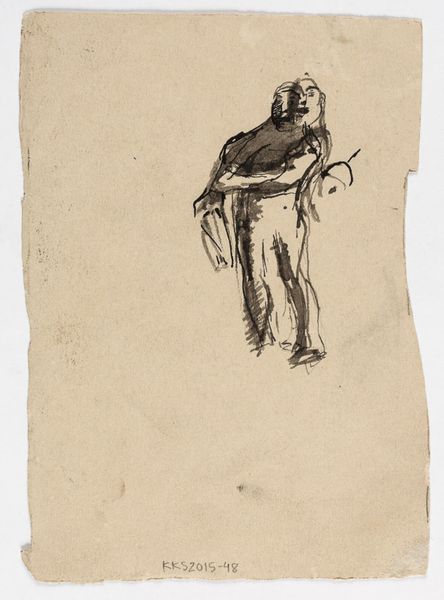
En lille grædende dreng, der sidder med en spade eller en åre, på kanten af en båd (?) 1743 - 1809
0:00
0:00
Dimensions: 109 mm (height) x 85 mm (width) (bladmaal)
Curator: Here we have "En lille grædende dreng, der sidder med en spade eller en åre, på kanten af en båd (?)" created sometime between 1743 and 1809 by Nicolai Abildgaard. Editor: What strikes me immediately is the limited palette— it’s almost monochromatic, using variations of brown ink, giving the scene a somber, melancholic feel. The rough, almost hasty execution hints at the precarity of the boy’s situation. Curator: Indeed. The use of brown ink as the primary medium isn’t coincidental; in baroque portraiture and genre scenes, it’s often linked to earthly materials and humble subjects. Consider the ways Abildgaard presents this boy, likely fatherless given his emotional distress. Editor: I am really arrested by how that brown is applied. Note how Abildgaard renders the background as a solid block of brown while using hatching and cross-hatching to form the figure of the boy. Curator: Notice also how the child is obscuring his face. While it physically signifies vulnerability or sadness, symbolically, the concealed expression speaks to larger themes of isolation and introspection, often connected to spiritual awakening and sacrifice that emerge at the dawn of the Enlightenment. Editor: Yes, there is something about the materiality that strikes me in that way too. I find myself thinking about the ink itself: what it was composed of, who manufactured it. Was it from local materials or something more rare that signals the socio-economics surrounding art at the time? Curator: Precisely, ink, though seemingly simple, had significant social implications, reflecting not just the skill of the artist, but also systems of trade and consumption, echoing larger networks. The ink allows a glimpse into material and cultural relationships with Abildgaard's themes of masculinity. Editor: Well, looking at this ink-wash now, it's been interesting to reconsider art's role in its era, and consider how the material gives rise to this symbolic figure in all his melancholy. Curator: It invites us to recognize the lasting relevance of the era’s emphasis on virtue, feeling, and cultural legacy within the social construction of personal expression and self-discovery.
Comments
No comments
Be the first to comment and join the conversation on the ultimate creative platform.
